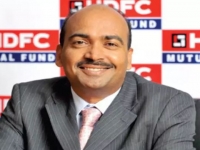Considering the current market levels, what are your views on valuation?
Equity markets have lagged nominal GDP growth for several years now. Markets are trading at FY19E PE of 16x and FY20E PE of 14x, which are reasonable, especially given the low interest rates. Earnings outlook is getting better with improvement in operating margins, lower interest rates, peaking NPAs and higher metal prices. In our opinion, there is merit in increasing allocation to equities with a medium to long term view.
We have been hearing from your fund house that market is fairly valued as market capitalization to GDP is close to 90%. What does market capitalization to GDP signify and how it is related to India where we do not have representation from some key sectors driving Indian economy like agriculture?
Market cap to GDP is a percentage metric of the total market cap of a nation`s stock markets relative to its GDP. Despite the market rally, this number continues to remain below 100%. Hence, we believe that markets continue to offer value in certain segments. Markets over the long term tend to tread alongside the long term growth average of the Nominal GDP. Historically, average growth in nominal GDP stands at 15%.
Apart from liquidity, what is driving the markets currently? What could derail it?
The current rally is largely driven by the appeal of Indian equities to both domestic and international investors. While FIIs continue to remain positive on India, they have taken some money off the table on concerns over the performance of the economy. However, the strength of domestic flows has been evident in market buoyancy over the last few months despite FII selling in the equity markets.
Key risks to this market rally remain external geo-political tensions emanating specifically from the Far East and elsewhere in the world. On the domestic front, denting market sentiment could reduce liquidity from domestic investors.
What would be the impact of rising crude oil prices on the Indian market? Can we expect some correction going forward?
The Indian economy is largely a domestic focused economy. However, global sentiment plays a key role in market movements. Crude oil is likely to be a sentimental short term negative for the Indian markets.
The fundamentals of the economy continue to remain positive. Proactive steps by the government on key structural issues like taxation and infrastructure development have been seen as big positives and long term growth drivers. The recent Moody`s upgrade is a testament to this. We do not expect the recent up move in crude to have a long term negative impact.
We have been hearing from fund managers that corporate earnings are round the corner for the last three years. Why has it not revived so far? When do you expect the revival in corporate earnings?
The earnings growth in recent past has been weak mainly due to the sharp fall in profits of sectors like steel, engineering and capex and corporate banks and this had hurt aggregate profit growth. With the sharp recovery in steel and other metal prices, peaking of provisioning costs in banks and a slow but steady improvement in infra capex, earnings recovery is underway and it should become increasingly evident with each passing quarter. The Q2FY18 results are pointing in that direction.
What is your outlook for equity for the next two years?
GDP growth has indeed slowed down in last few quarters. However, this is, in all probability driven by demonetisation and GST, two very significant reforms that have caused a temporary disruption in the normal functioning of the economy. However, as things normalise, growth rates are likely to recover over the next few quarters. Monthly data in Q3 for several parameters already point in that direction.
The medium term outlook for the economy is even more encouraging. This view is driven by a likely acceleration in infra capex, affordable housing and a revival in private capex. As per recent news flow, there are reasons to be optimistic about revival of private capex in the not too distant future primarily led by metals sector.
Earnings outlook is improving and an earnings recovery is imminent because of improvement in operating margins, lower interest rates, peaking NPA has and higher metal prices. We believe that this market continues to remain an attractive investment opportunity for long term investors.
In recent times, while FIIs has been on the selling side, domestic institutional investors are buying. Does this indicate that FIIs have sensed some risk to the Indian growth story? What are your views?
The Indian markets to date have received a net inflow of roughly US$8 billion (Source: NSDL) since the start of the calendar year in the equity markets. The months of August & September have been the only months of negative outflow so far. FIIs have been significantly overweight on India since 2015 and the outflow figures are relatively inconsequential as compared to the inflows that we have witnessed both on the equity and debt side. As mentioned earlier, domestic factors like strong GDP growth, stable inflation and the government`s focus on maintaining the fiscal balance continue to attract long term foreign investors.
What is the rationale behind launching HDFC Housing Fund at this juncture?
The investment rationale for the scheme is driven by the following factors
- Housing sector is likely to be a big growth driver for the economy
- The government of India housing-construction initiative, ‘Housing for All’ aims to build 50 million low-cost houses over the next five years (i.e. by 2022).
- Immediate objective of Pradhan Mantri Awas Yojana (PMAY-Gramin is to construct houses for 1 crore people living in kutcha/dilapidated houses by FY19. PMAY-Urban has a target to build 1.12 crore houses by FY22)
- Government support in the form of direct subsidies and cheaper loans to achieve its target.
- In the past five years, mortgage rates have dropped 250bps - lower interest rates will enhance demand for housing.
- Housing is a broad theme that impacts multiple industries – banking and housing finance, insurance, cement, steel, consumer durables, sanitary ware, cables, lighting, glass, metal fabrication, infrastructure, power, paints, air-conditioners, building products and capital goods (derived demand) etc.
Affordability of housing has improved with stable prices, improvement in income levels and decline in mortgage rates. Further, Housing for All by 2022, program of the government has started gaining momentum and we anticipate a gestation period for this opportunity to deliver.
Why is this a close ended fund?
Being a thematic fund and keeping in mind the gestation period of such investments, a close ended fund ensures investors remain invested through the tenure of the scheme to reap the potential rewards of such investments.






